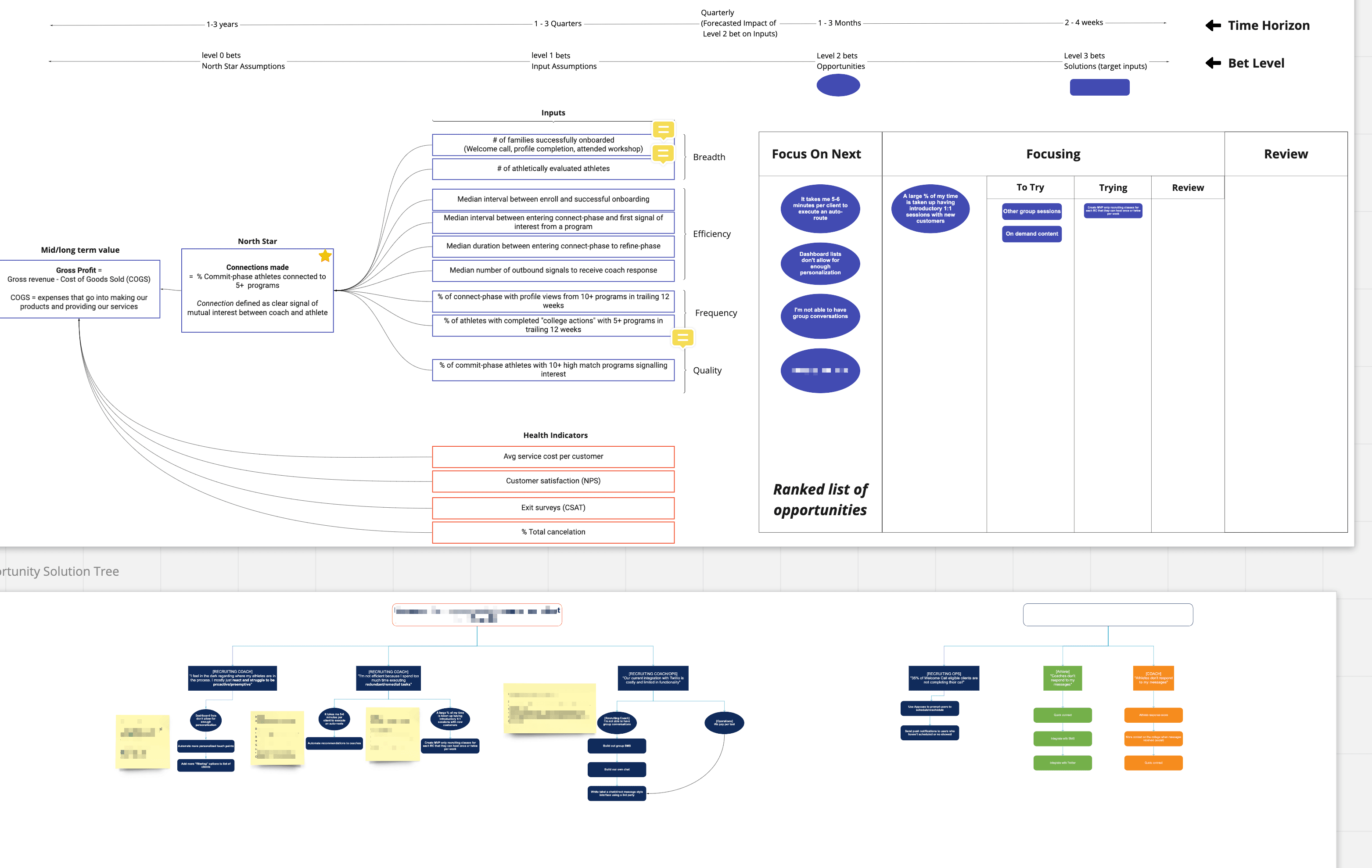My Journey to Find the North Star
Tyler Joyce recounts his learnings that led to finding his product's North Star Metric. Here are the frameworks, workshops, and exercises that guided him along the way.
Over the past four-ish years in my role as a product manager—despite my best efforts/intentions—I noticed a disturbing pattern. Most of the products and features we were releasing failed to live up to what we hoped for. Most weren’t outright failures, but nothing seemed to really make an impact.
Why does this happen? I seem to be surrounded by smart and talented people with a lot of domain expertise. I read all the blogs. I listen to all the podcasts. We focus on outcomes and not output. We talk to our customers. We’re “agile” (mostly).
Marty Cagan explains this phenomenon with “two inconvenient truths” about product:
- The first, at least half of our ideas are just not going to work.
- The second, that even with the solutions that are initially successful and have potential, it typically takes several iterations to optimize the solution.
…Welp, that’s depressing, Marty. I have a graveyard full of failed features and we always seem to be onto the next project before we ever get a chance to iterate. But wait, there must be a better way!

Keeping Cagan’s “two inconvenient truths” in mind, I went back and searched for my own answers on why features failed to live up to the hype. I wanted to start from the beginning. How did we decide this is the most important thing to do in the first place? I looked into a variety of frameworks: Jobs to be Done, Lean Startup, Design Sprint, and Opportunity Solution Trees among others. I even facilitated a few design sprints and started sprinkling in concepts from these frameworks in meetings with stakeholders. There were glimpses of excitement and alignment, but by the end of the year I found myself constantly asking, “Does what I’m working on actually matter? Does it matter to the business? Does this matter to our customers? And if it matters, why isn’t it moving the needle?”
THE NORTH STAR PLAYBOOK
What’s your product’s North Star Metric?
Discover your product’s North Star Metric with our comprehensive guide.
So when our team started reading up on and discussing “North Star Metrics” towards the end of the year, I was begrudgingly intrigued. Then a colleague introduced the North Star Playbook authored by Product Coach John Cutler. I was hooked after the first page.
Snippet from the first page of The North Star Playbook

Those bullet points captured my frustrations perfectly.
So I figured I’d take another swing at it. It was the beginning of a new year which means the “S word” was being thrown around a lot. “What’s our 2020 strategy?” “Well, funny you should ask,” I said. “I think we need a new framework!” Everyone rolls their eyes and looks for the nearest exit. Luckily my boss and teammates were willing to humor me.
Ok. I read the book, watched the video and even talked to John Cutler. I felt like I understood the framework inside and out. What next?
Schedule a meeting of course! I’m going to explain to everyone how great this new framework is going to be. I’ll schedule a two-hour open forum brainstorm. We’ll leave with a North Star and everyone will thank me for the euphoria.
Yeah… that didn’t happen. Turns out, “best practices” are best for a reason. I thought I could take a short cut. Nope! The meeting was a bit of a debacle. Too many people, no structure to the conversation, lots of talking past each other.
So I regrouped. I took what I had learned from the design sprint activities and laid out a much more structured set of activities and a more focused approach.
- We narrowed our focus to just nailing down our product vision statement
- We focused on a North Star metric that is reflective of our vision
- We formalized the inputs into our North Star
- We formalized our definitions and how we were going to measure each metric
Throughout the discussions we utilized “silent brainstorming” and “note and vote” exercises to avoid the pitfalls of the first meeting.
End result? We are now aligned around one metric driving long-term sustainable success. What’s better? We have a framework with which to prioritize ideas, and an agreed upon shared language to communicate the decisions we make.
This is great, but now the hard part. What are we actually going to do? This is what John Cutler refers to as “the work.” How are we going to actually come up with ideas that directly impact these Inputs and our North Star? How are we going to ensure we come back and iterate?
Screenshot from Miro board with North Star Framework (top) and Opportunity Solution Tree (bottom)

After some trial and error I realized that the Inputs of the North Star Framework could be reframed as desired outcomes in Teressa Torres’ Opportunity Solution Tree. Using the visualization of the Opportunity Solution Tree we could then define both the opportunities to achieve our desired outcome, and the solutions we will make against each opportunity.
From here we force rank each opportunity by forecasting which opportunities have the greatest impact on our Inputs, and then which Inputs have the greatest impact on our North Star. This forms a backlog of opportunities—not a roadmap. The traditional roadmap sets the expectation that every solution/feature will get done within a certain timeframe, often creating “orphan features” where we never return to and iterate/optimize. The opportunity backlog also evolves and shifts. As you learn, you re-prioritize. With this framework we force the backlog of opportunities to be scrutinized against our Inputs, and by definition, our North Star and Product Vision.
Ultimately this hybrid framework that joins together the Opportunity Solution Tree with the North Star aligns our work with the bigger picture, ultimately keeping us focused on the things that matter, and empowering us to say “no” to things that don’t.
This post was originally published on Medium.

Tyler Joyce
Senior Product Manager, Next College Student Athlete (NCSA)
I’m a Senior Product Manager at Next College Student Athlete (NCSA). We aim to solve problems for high school athletes and college coaches through technology and service that improves efficiency and effectiveness in their journey to find the right school or athlete.
More from Tyler




